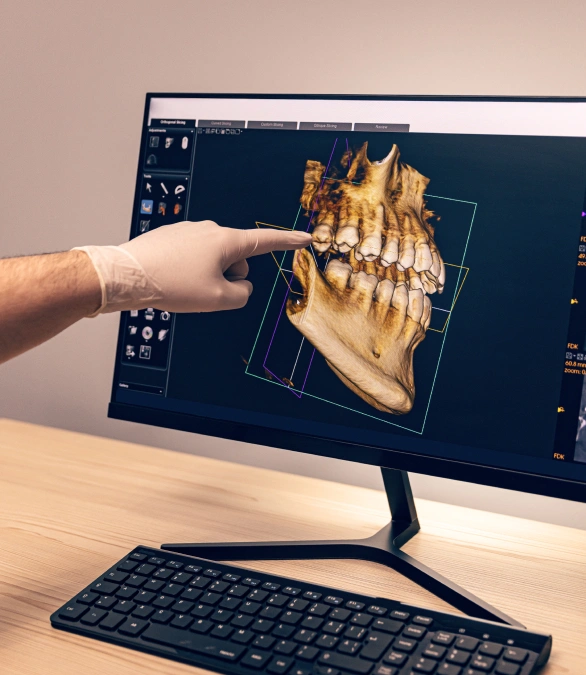

CBCT Dental Imaging for Advanced Diagnosis
Modern dental care is evolving—and 3D Cone Beam CT imaging is one of the leading innovations enhancing how we diagnose and treat oral health issues. This technology captures a highly detailed 3D view of your teeth, jaw, and surrounding structures. Unlike traditional two-dimensional x-rays, Cone Beam Computed Tomography (CBCT) allows us to see precise angles, depths, and relationships between tissues, helping guide more accurate, safer treatment decisions.
With a clearer view of your entire oral and facial structure, we can diagnose problems more effectively and develop treatment plans with confidence—all while improving your comfort and outcomes.
What Is CBCT Dental Imaging?
Traditional dental x-rays offer flat, two-dimensional images of your teeth and jaw. While helpful, they often provide a limited view. Cone Beam CT imaging, on the other hand, delivers detailed three-dimensional images that allow us to see your dental anatomy from every angle. This imaging method makes it easier to visualize complex issues like bone loss, nerve location, or damaged roots—something 2D x-rays can easily miss.
By using this technology, we can rotate, magnify, and closely examine every structure of your mouth—ensuring nothing is overlooked during diagnosis or treatment planning.
When Is 3D Imaging Recommended?
- Diagnosing and evaluating TMJ (temporomandibular joint) disorders
- Planning dental implant placement with precise measurements and positioning
- Creating accurate surgical guides for complex oral surgery
- Preparing for safe and effective root canal therapy
- Evaluating bone structure, nerve pathways, and sinus cavities
How CBCT Imaging Enhances Patient Care
- Patients can view high-resolution 3D scans chairside, helping them better understand their diagnosis and treatment plan
- Specific problem areas can be highlighted and zoomed in, improving education and trust in the care process
- Digital files can be shared quickly with labs, insurance providers, or specialists for faster communication and coordination
- Stored digital records make it easy to monitor changes over time and compare scans for long-term treatment success
